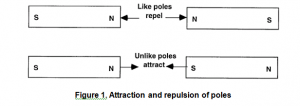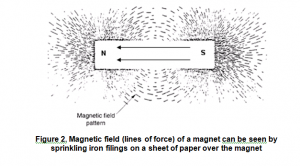Magnetic Particle Testing MT
INTRODUCTION
Magnetic Particle Testing MT , also known as a mag test is a common method of nondestructive examination (NDE). It is a flexible technique that can be performed under a variety of conditions, including underwater.
When discussing magnetic particle theory, we usually classify materials into the following three categories:
Diamagnetic – those materials that cannot be magnetized (Copper, Gold Silver)
Paramagnetic – those materials that will accept magnetism but only slightly (Magnesium, Lithium, Titanium)
Ferromagnetic – those materials that can be strongly magnetized and are suitable for magnetic particle inspection (Iron, Cobalt, Nickel and their alloys)
Ferromagnetic materials are not magnetized in direct proportion to the applied magnetizing force. There is a limit, called the saturation point, beyond which a part cannot be made more magnetic.
You can use an Magnetic Particle Testing MT on all types of welds as long as the material is ferromagnetic. You will normally use an Magnetic Particle Testing MT to inspect finished welds. However, you may also use it to inspect each pass of a multiple-pass weld.
An MT can detect surface and near-surface discontinuities. However, do not use an Magnetic Particle Testing MT as a substitute for radiographic (RT) or ultrasonic (UT) testing for subsurface defects.
The purpose of this module is to train you to perform an Magnetic Particle Testing MT on finished or partial welds.
In this Introduction, you will become familiar with the principals of magnetism for an Magnetic Particle Testing MT.
Principals of Magnetism for the Magnetic Particle Testing MT
Magnetic Poles
A material that possesses the ability to attract iron pieces is called a magnet. Ferromagnetic materials make the best magnets.
Magnets may be permanent, retaining their magnetism more or less permanently, or temporary, retaining their magnetism only as long a magnetizing force is being applied.
Each magnet has at least two opposite poles. Opposite, or unlike, poles attract each other; like poles repel (see Figure 1). The magnet’s ability to attract or repel is not uniform over its surface; it is concentrated in its poles.
Magnetic Lines of Force
Lines of force represent the direction and strength of a magnet’s field, or power. All magnets have magnetic lines of force, also called a magnetic field or flux. In Figure 2, a bar magnet is covered with a sheet of paper and iron filings are scattered over the paper. The iron filings arrange themselves to follow the magnetic lines of force. As you can see, the lines of force never cross; they seek the path of least resistance.
Figure 2 shows that the lines of force are most densely packed at the poles of the magnet. The flow is from north to south outside the magnet, but within the magnet the flow is from south to north.
Magnetic lines of force have the following characteristics:
- They form closed loops.
- They return upon themselves and form closed paths.
- They never cross.
- They seek the path of least resistance.
- They are most densely packed at the poles.
- They flow from north to south outside the magnet and from south to north inside the magnet.
Horseshoe Magnet
If a bar magnet is bent, it becomes a horseshoe magnet (Figure 3, left side).
When the magnet is bent to make a complete circle and the ends are fused together, the poles disappear and a closed magnetic circuit is formed (circular magnet) (Figure 3, center).
If the circle is cut, either partially or all the way through, the poles will reappear (Figure 3, right side). This break causes a deformity in the lines of force. This deformity in the lines of force is the basis for the principle of magnetic particle examination.
To Learn Magnetic Particle Testing (MT) Contact us….


Leave a Reply